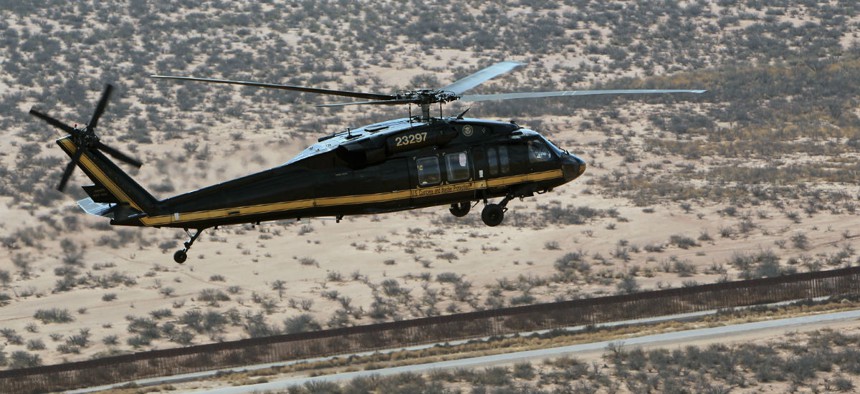
Donna Burton/CBP file photo
ICE and Border Patrol Still Struggle With Smugglers at Southern Border
GAO finds some progress in detecting tunnels.
Along the southern border where President Trump envisions a new wall, human traffickers and illicit drug smugglers continue plying their trade using tunnels, ultralight aircraft, fishing boats and recreational maritime vessels, a watchdog reported.
From 2011-2016, 67 cross-border tunnels were detected in the Border Patrol’s territory around Tucson, Ariz., and San Diego, Calif., the Government Accountability Office wrote in the just-released public version of a February report to members of the House Homeland Security Committee.
“The number of discovered cross-border tunnels generally declined during the period, with 18 tunnels discovered in fiscal year 2011 and 9 tunnels discovered in fiscal year 2016,” auditors said. “However, CBP’s 2015 tunnel report to Congress found that illicit cross-border tunnels are a persistent threat to national security and that increased border enforcement efforts would likely continue to push illicit cross-border smuggling underground.”
GAO’s review of Homeland Security Department statistics also found “534 detected ultralight aircraft incursions and 309 detected drug smuggling incidents involving panga boats (a fishing vessel) and recreational vessels along U.S. mainland borders [during the five-year period]. The number of known smuggling events involving these methods generally declined over this period, but they remain threats.”
Though DHS has established coordination mechanisms and interagency task forces to counter all the types of threats, it “has not established comprehensive standard operating procedures for addressing cross-border tunnels, and we found that relevant officials were not aware of all DHS systems or offices with tunnel information,” auditors found. And though planners have invested in at least five technology plans to detect ultralight aircraft, DHS has “not assessed and documented how all” the proposed plans will meet operational requirements or prove cost-beneficial.
GAO made six recommendations, chiefly that DHS officials establish more formal procedures, performance measures and targets for three threat areas. ICE, the Border Patrol, and the Coast Guard, for example, should better share information and monitor performance.
DHS did not concur with two, arguing that memoranda of understanding and other procedures already exist for sharing and coordination between ICE and CBP on the tunnel threat. And, a DHS manager wrote, “focusing on performance measures and targets related to smuggling and panga boats does not begin to address the larger, dynamic and adaptive nature of smuggling operations and would fall short of providing a holistic, strategic assessment of operations to prevent all illicit trafficking.”
NEXT STORY: The Military's U-Turn on Student Athletes







